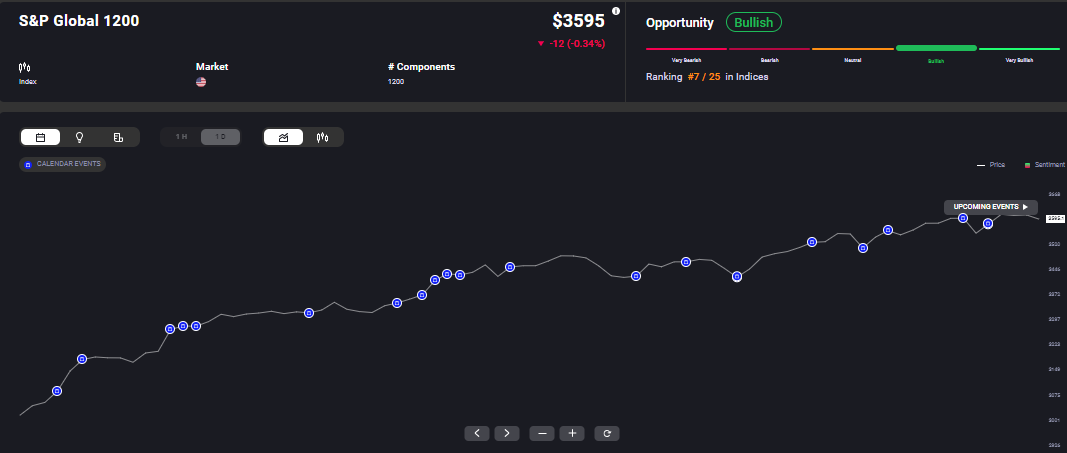Inflation has been among the most closely monitored economic data releases by economists, investors, and governments alike.It became the single most important signal on the radar after hitting multi-decade highs in the world’s most developed countries in 2022. The US, UK, EU, and Australia gave their central banks the arduous task of curtailing inflation, which led to a series of interest rate hikes. More than a year later, central bank policymakers are still juggling between curbing inflation and preventing recession. Will interest rates be cut anytime soon? We’ll be looking at what inflation really measures, how oil prices impact it, and whether interest rate hikes have really been effective in cooling prices.
How is Inflation Calculated Anyway?
The release of inflation data every month impacts the global financial markets. This is because unexpected spikes can wreak havoc on investment portfolios.
The CPI (consumer price index) is used by virtually every developed country to measure inflation. Notwithstanding its popularity among governments, the CPI often proves to be an unreliable barometer of the cost of living. This is because it considers price changes in a predetermined (fixed) basket of goods and services. Although this basket includes a wide range of items, from housing and healthcare to haircuts, it excludes a host of goods and services on which consumers may spend money.
Another consideration is whether a price hike is temporary or represents a trend of rising prices. The US Bureau of Labor Statistics publishes the all-items index. In January 2024, the US CPI rose 0.3%, following a 0.2% rise in the previous month. On the other hand, the all-items index for the 12 months to January 2024 showed a rise in prices of 3.1%, following an increase of 3.4% in the 12 months ending December 2023.
The predetermined basket has two broad categories of items – goods and services. The inflation for these may vary greatly. In January 2024, the US CPI was on a downward trend, but the inflation in services accelerated to 0.7%, from 0.3% in the previous month. For reasons such as these, the US Federal Reserve uses another measure of inflation known as PCE (personal consumption expenditure), which aims to measure what consumers actually spend rather than what goods and services cost. The PCE for December 2023 stood at 0.2% month-on-month and 2.6% year-on-year.
Energy and Inflation
Another factor that adds more complexity in measuring inflation is the inclusion of oil. For the better part of 2022, the inflation narrative among governments and policymakers was that it was essentially a food and fuel issue. Covid-led supply chain bottlenecks and the Russia Ukraine war were cited as the culprits, suggesting that the easing of these would bring down inflation. It didn’t.
While the CPI includes changes in energy and food prices, the core CPI figure excludes these volatile items to reduce the noise in the inflation figure. Even when we consider core CPI, it’s impossible to strip the impact of energy prices, which has an all-pervasive and domino effect on the economy. Core CPI in the US fell to a 30-month low of 3.9% in December, this may not have been possible in the absence of oil prices declining by almost 12% through 2023. While businesses passed on 45% of rises in energy costs before the pandemic, this climbed to 60% by 2023, according to Goldman Sachs. This directly impacts CPI.
UK’s Office of National Statistics estimates the intensity of indirect energy costs on the CPI at 6.6%, reflecting the impact of energy on production and the supply chain. The impact of energy costs on inflation various between developed and emerging economies. For economies like the UK and EU, which rely heavily on the services sector, the correlation between inflation and oil prices has declined, while this correlation remains strong in manufacturing-based economies.
Have Interest Rates Succeeded in Lowering Inflation?
“Brr,” say policymakers as they no longer feel the heat. This is especially true for the US Fed. Inflation has eased without inflicting a lot of harm on the economy. Despite high interest rates, GDP is growing (2.5% in 2023 vs 1.9% in 2022), compared with an increase of 1.9 percent in 2022 and the labour market is tight. A pat on the back for policymakers? Not so fast. They were helped by several factors. Rising petroleum production in the US kept gas price down. The entry of millions into the workforce kept wage growth in check. Growth in real estate projects contained rent increases and the cost of new leases. And continued supply chain improvements lowered the prices of raw materials and delivery. The bullishness surrounding the US economy is reflected in Acuity’s AssetIQ widget.

On the other side of the pond, the UK faced a much larger scale of the inflation crisis, as it was already exacerbated by Brexit when prices started soaring. Inflation hit 11.1% in October 2022 in the UK versus 10.6% in the EU. The BoE responded with 14 successive hikes up to 5.25%, while the ECB raised its rates to 4.00%. The UK, which had been dealing with labour shortages since Brexit, saw its GDP growth decelerating to 0.1% in 2023, from 4.3% in 2022.
As central banks prepare for interest rate cuts in 2024, they face the risk of another spike in inflation when global economic growth ramps. The Middle East crisis could also add to inflationary concerns by causing oil prices to climb.
Market Commentary